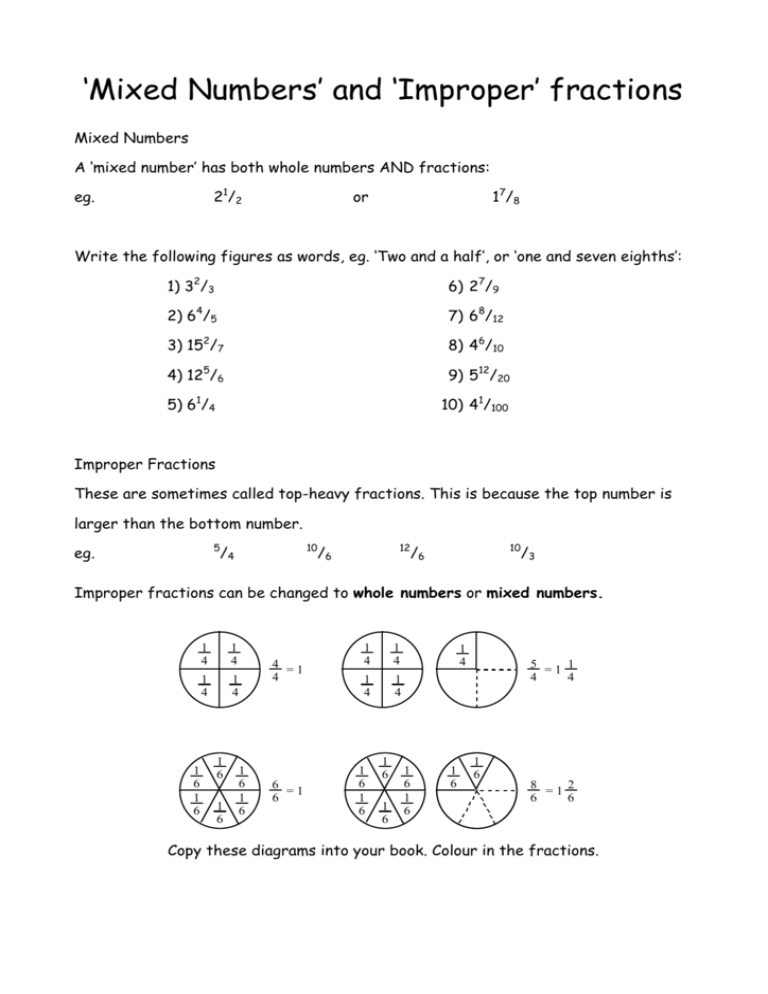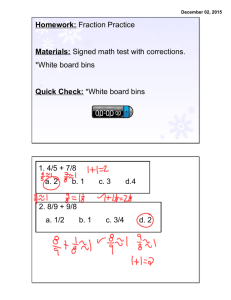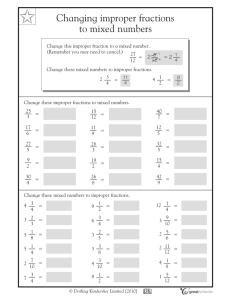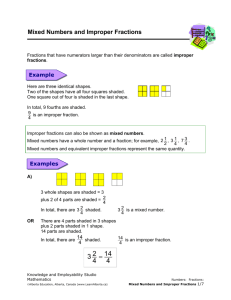`Mixed Numbers` and `Improper` fractions
advertisement

‘Mixed Numbers’ and ‘Improper’ fractions Mixed Numbers A ‘mixed number’ has both whole numbers AND fractions: 21/2 eg. 17/8 or Write the following figures as words, eg. ‘Two and a half’, or ‘one and seven eighths’: 1) 32/3 6) 27/9 2) 64/5 7) 68/12 3) 152/7 8) 46/10 4) 125/6 9) 512/20 5) 61/4 10) 41/100 Improper Fractions These are sometimes called top-heavy fractions. This is because the top number is larger than the bottom number. 5 eg. 10 /4 12 /6 10 /6 /3 Improper fractions can be changed to whole numbers or mixed numbers. 1 6 1 6 1 4 1 4 1 4 1 4 1 6 1 6 1 6 1 6 4 =1 4 6 =1 6 1 4 1 4 1 4 1 4 1 6 1 6 1 6 1 6 1 4 1 6 1 6 1 6 5 =1 1 4 4 1 6 8 =1 2 6 6 Copy these diagrams into your book. Colour in the fractions. To change an improper fraction to whole, or mixed numbers, we can divide the numerator by the denominator. That will tell us how many whole numbers we can make up. If there are any remainders, they will be the fractions that are left over: 10 6 =1 6 goes into 10 once, with 4 left over. The 4 becomes 4 6 the numerator and the denominator is still 6. Convert the following improper fractions into whole, or mixed numbers: 11) 12/6 = 16) 37/10 = 12) 13 17) 49/8 = 13) 27 18) 56/8 = 14) 28 19) 45/2 = 15) 23 20) 23/3 = /6 = /5 = /5 = /10 = We can also change mixed numbers to improper fractions: eg. 3 1 3 = 3 3 + 3 3 + 3 3 + 1 3 = 10 3 Convert the following mixed numbers to improper fractions. If it helps you, draw it out as above. 21) 21/6 26) 61/8 22) 52/5 27) 221/2 23) 53/5 28) 72/3 24) 23/10 29) 63/7 25) 37/10 30) 86/4








